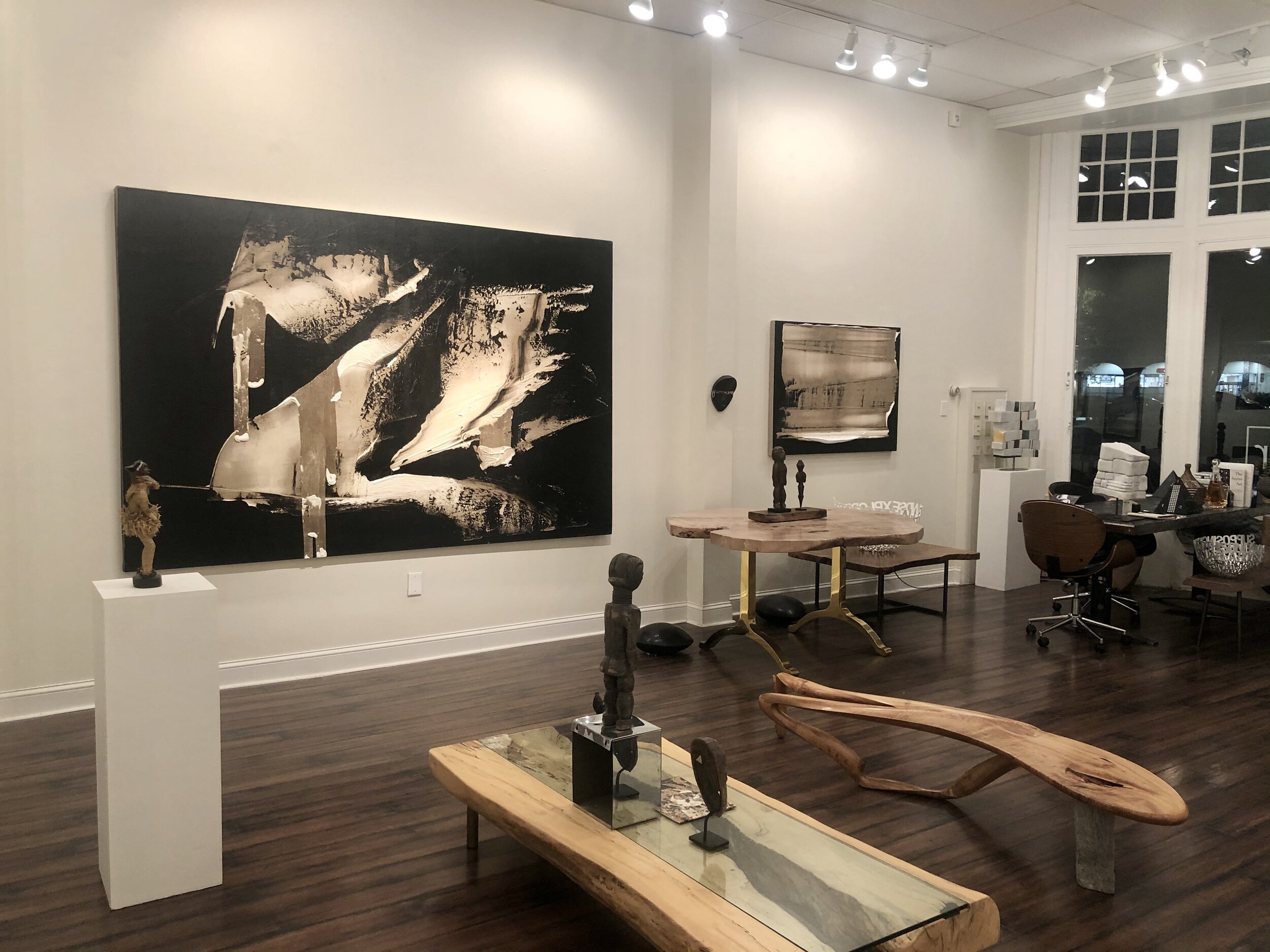THE HEALING OF A DREAM - SELECTED WORK










Opens October 30th through December 8th
A Solo Exhibition Richard Nocera
ATELIER NEWPORT's late fall exhibition, The Healing of a Dream, will open October 30th, at the gallery, located at 200 Bellevue Avenue in Newport, alongside the historic International Tennis Hall of Fame.
The Healing of a Dream, a solo exhibition, featuring Nocera's latest body of work from the Sequoia Series. This selection of minimalist paintings, juxtaposed with a collection of primitive African masks from the 20th century, on loan from the de Pinho collection, highlight the time-honored traditions of ritual, art making, mask making, and woodcarving. In the early 20th century, African artworks, acquired by Paris museums during the expansion of the French empire into Sub Saharan Africa, were abuzz among exotic tales exposing the mistreatment of Africans in the Belgian Congo, and brought to light in Conrad's book,
Heart of Darkness. During this political climate, Picasso, was inspired by African artwork after Henry Matisse shared a mask made by the Dan people of Africa. This influence was illustrated in his artistic process from 1907- 1909 and referred to as "The Black Period". During our current political climate, we highlight and honor this inspiration. In writing about his process, Nocera states, "These white-on-black abstractions are merely residue left behind, the result of a much greater defining process. For over seven years, my attention has been on a body of work entitled "Sequoia," named after my mixed-race daughter. Her African American mother and I had her seven years ago. This ongoing series of paintings mirrors and informs the connections and distinctions between us and, ultimately, the outside world. Guiding this process are two principles: black should strengthen white and white should strengthen black. The medium is black tar and titanium white oil. Whenever possible, I get out of my way and simply allow the medium to be the medium. Tar informs. It gives depth to light and establishes shape and configuration that can't exist without it. Often tar creates unforeseeable results that challenge and exceed expectations. The ambivalence of tar separates me from my intentions and fosters acceptance. Titanium white describes. It offers variation to dark and provides body and reflection that can't exist otherwise. It's the searchlight, engaging and revealing what is there. Imposing at times, titanium white offers itself up and communicates a response in return. Isolating and converging white and black, the paintings in this series promote similarities as well as differences. That said, the impact I have on the material is less important than the material's impact on me. These works allow me to transcend concept into reality, and in doing so help define who I am, who my family is to me, who I am to my family, and who we all are to a larger world." Well-known art critic, Peter Frank, states, "Painting is the loneliest art. (Well, poetry is lonelier, but it feeds on its loneliness. Painting does not.) The conception of a body of paintings takes place in as much of a vacuum, as much of a private space, as does its execution. A studio is at once a feedback mechanism and an anechoic chamber: ideas go there, or come from there, virgin-born, tested only by their direct relationship to the artist's intentions. Richard Nocera does not espouse a binary approach to existence; he simply employs one. The Sequoia series, you might say, is an experiment in elementation - although not one in reduction. The means are reduced to begin with; Nocera engages them in a variety of painterly interactions that, if anything, complexifies the relationship of figure to ground. The ground does not manifest absolute "absence," nor does the figure embody "presence." Rather, each factor seeks and gains fulfillment from the other. And the lucidity of Nocera's formula does not propose a recipe for mere harmony. Anything but; there are frequent moments of tension and even seeming dissonance. But these resolve, or at least assume a concordance that allows them their quirks and uneven passages (the tar, close inspection reveals, no less than the titanium). At worst - no, at best - yin and yang agree to disagree, and, similarly, their inner conflicts neither resolve nor dissolve. Nocera's depth of field and articulation of figure relies not just on a clearly stated contraposition, but on intricately conceived presences. How human is that?"
